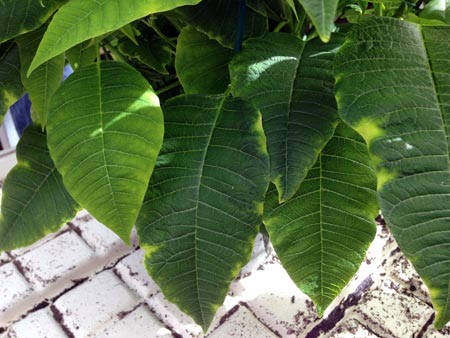Poinsettias: The problem children
Poinsettias are susceptible to diseases, distortion through rapidly changing environmental conditions, and uncommon nutrient deficiencies.
For some of us, poinsettias are a signal that the holidays are upon us and it is time for another cup of hot cocoa. But for greenhouse growers around the country, poinsettias can be a very challenging crop to grow. According to Michigan State University Extension, poinsettias are extremely susceptible to diseases such as Pythium root rot and scab (Sphaceloma poinsettiae), heat stress, plant growth regulator (PGR) overdose and phytotoxicity, and numerous nutrient deficiencies. Cultural practices such as keeping a clean greenhouse, not allowing dramatic swings in temperature, and providing a fertigation program with micronutrients can help prevent some of these production issues.
Poinsettias with Pythium root rot are often stunted, wilted despite media wetness, and slightly chlorotic. The roots are often brown, squishy and exhibit “rat tails,” where the outer cortex of the root slips away from the vascular tissue (Photo 1).
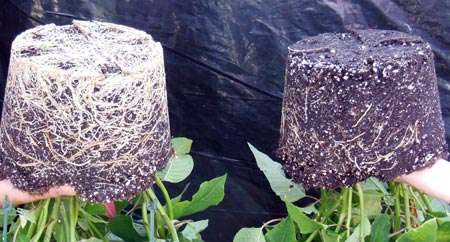
Photo 1. Left, normal rooting of poinsettia. Right, poinsettia infected with Pythium.
Photo credit: Garrett Owen, Purdue University
Poinsettia scab is more common in outdoor production in southern climates; however, it can also occur in greenhouses in the northern United States. Three main characteristics show evidence of poinsettia scab. First, the plant may exhibit one shoot that is overly elongated compared to the rest. Secondly, scabby growth appears on the stem, especially towards the media surface (Photo 2). Finally, brown lesions are present on the leaves. For more information, visit North Carolina State’s Poinsettia Scab fact sheet.
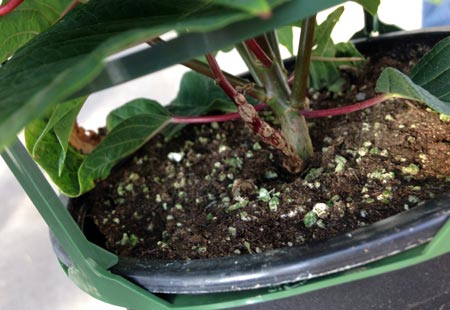
Photo 2. Poinsettia scab caused by Sphaceloma poinsettiae.
Photo credit: Heidi Wollaeger, MSU Extension
Often propagated during the hottest months of the year, poinsettia cuttings are frequently subject to heat stress. Rapid changes in both can cause poinsettia leaf malformation. You may even notice a pattern or gradient of malformed plants in the greenhouse when the environmental conditions change dramatically. In addition, certain cultivars may be more sensitive to rapid swings in heat. In some cases, plants can grow out of it, while in others cases, plants are permanently damaged and not saleable (Photo 3).
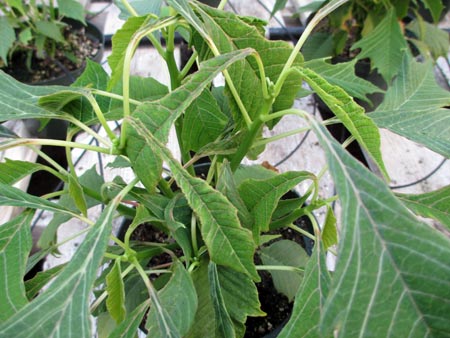
Photo 3. Leaf distortion caused by rapid changes in heat.
Photo credit: Heidi Wollaeger, MSU Extension
PGR overdose and phytotoxicity can be become a problem in poinsettia crops. When overdosed with a PGR, the leaves are stiff and very dark green. Upon overdose of a PGR, plants of certain cultivars can be susceptible to phytotoxicity, distinguishable by edge burn on the margin of the leaf (Photo 4).
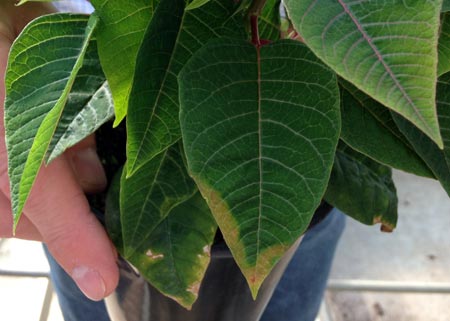
Photo 4. Phytotoxicity of Cycocel on poinsettia.
Photo credit: Heidi Wollaeger, MSU Extension
Finally, poinsettias can develop nutritional deficiencies more readily than other species. Poinsettias are the only common ornamental plant that develops molybdenum (Mo) deficiency. Symptoms of Mo include the downward curling of leaves, chlorotic margins, and, in advanced cases, leaf distortion (Photo 5).



 Print
Print Email
Email